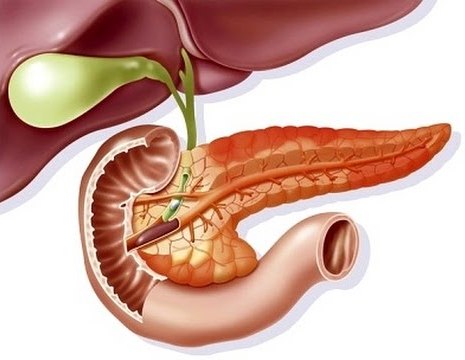Among the most important organs of our body, but we tend to forget more surprising, the pancreas is probably one of the most outstanding, of which only remember us when any related disease arises (such as is the case of diabetes or conditions more serious as pancreatitis).
Basically it consists of a body that is located in our digestive system. Its head is located in the concavity formed by the second portion of the duodenum, and can grow to between 20 to 30 centimeters, 5 centimeters thick and weighing approximately 70 to 150 grams.
It is more specifically of a large size gland, which is located behind the stomach and closes precisely the first part of the small intestine. Among its main functions we can mention the separation of digestive juices in the small intestine through a tube – a known by the name of pancreatic duct – as well as the release of hormones such as insulin and glucagon in the blood.
What is pancreatitis?
Pancreatitis is the inflammation of the pancreas, which tends to occur when different digestive enzymes begin to digest the pancreas. Therefore it is considered a serious condition, which if not treated quickly and properly can cause various complications.
Types of pancreatitis
Basically two types of pancreatitis may occur:
Acute pancreatitis is a type of inflammation of the pancreas that occurs suddenly, causing the appearance of intense and very painful symptoms abruptly and without notice. Usually, when appropriate medical treatment is administered, it tends to disappear in a few days.
Chronic pancreatitis tends to be a type of inflammation of the pancreas that does not heal or does not improve, worsen over time and causing permanent damage.
The symptoms of pancreatitis
Depending on whether it is an acute pancreatitis or chronic pancreatitis symptoms tend to vary a bit, especially if we take into account that, in general, the symptoms of acute pancreatitis begin abruptly, precipitously, characterized in turn to be tremendously painful and annoying.
Symptoms of acute pancreatitis
It symptoms occur suddenly, which are also characterized by disappear in a few days when the most appropriate medical treatment is administered. Among its most common symptoms include: pain that is located in the upper abdomen, with nausea, dizziness and vomiting.
Symptoms of chronic pancreatitis
It symptoms are not cured, as if with acute pancreatitis – or improve, deteriorate over time. This inflammation is one that tends to cause more damage in the pancreas, to be permanent. Its most common symptoms are nausea and dizziness, vomiting, stools with oily appearance and weight loss.
What are its causes?
It is common that in most cases, the main cause of acute pancreatitis is the presence of gallstones. Its symptoms appear especially when moving stones from the gallbladder to the bile ducts. Although habitually the gallstones usually dissolve of spontaneous form and without symptoms, when this does not happen these are the main cause of large painful attacks.
In the case of chronic pancreatitis causes may be due to other conditions and habits. For example, maintaining a regular heavy drinking over time can cause permanent inflammation of the pancreas, which also happens to the liver. It can also be due to cystic fibrosis and autoimmune diseases. The diet also influences: consume large amounts of fat or calcium.
Pancreatitis treatment
When diagnosed the existence of an inflammation of the pancreas, whether acute or chronic, standard medical treatment involves the administration of fluids, analgesics for pain and antibiotics intravenously for a few days while the person remains hospitalized, in addition to the maintenance of artificial nutrition.
Moreover, in the case that the pancreatitis is acute, it is necessary to carry a special diet and the consumption of enzymes.
